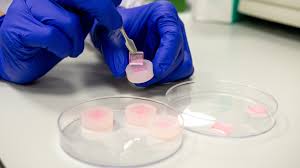
Breaking News
 Iran Regime Kills Protesters as Unrest and Calls for Regime Change Spread Nationwide
Iran Regime Kills Protesters as Unrest and Calls for Regime Change Spread Nationwide
 Trump, Treason, and the New York Times
Trump, Treason, and the New York Times
 Democrat idiocy at work in San Francisco
Democrat idiocy at work in San Francisco
 BREAKING THROUGH Tesla AI in 2026
BREAKING THROUGH Tesla AI in 2026
Top Tech News
 Laser weapons go mobile on US Army small vehicles
Laser weapons go mobile on US Army small vehicles
 EngineAI T800: Born to Disrupt! #EngineAI #robotics #newtechnology #newproduct
EngineAI T800: Born to Disrupt! #EngineAI #robotics #newtechnology #newproduct
 This Silicon Anode Breakthrough Could Mark A Turning Point For EV Batteries [Update]
This Silicon Anode Breakthrough Could Mark A Turning Point For EV Batteries [Update]
 Travel gadget promises to dry and iron your clothes – totally hands-free
Travel gadget promises to dry and iron your clothes – totally hands-free
 Perfect Aircrete, Kitchen Ingredients.
Perfect Aircrete, Kitchen Ingredients.
 Futuristic pixel-raising display lets you feel what's onscreen
Futuristic pixel-raising display lets you feel what's onscreen
 Cutting-Edge Facility Generates Pure Water and Hydrogen Fuel from Seawater for Mere Pennies
Cutting-Edge Facility Generates Pure Water and Hydrogen Fuel from Seawater for Mere Pennies
 This tiny dev board is packed with features for ambitious makers
This tiny dev board is packed with features for ambitious makers
 Scientists Discover Gel to Regrow Tooth Enamel
Scientists Discover Gel to Regrow Tooth Enamel
 Vitamin C and Dandelion Root Killing Cancer Cells -- as Former CDC Director Calls for COVID-19...
Vitamin C and Dandelion Root Killing Cancer Cells -- as Former CDC Director Calls for COVID-19...
Microneedles extract harmful cells, deliver drugs into chronic wounds

These approaches, published in two papers that appeared in the journals Biomaterials and Advanced Functional Materials last July, could drastically improve the quality of life for people with diabetes who suffer from some of the worst complications this condition brings on – and prevent expensive, life-altering amputations.
The challenge with diabetic wounds is that they're affected by persistent inflammation, and they don't heal because the critical proteins that aid in recovery – known as growth factors – are broken down by enzymes called proteases.
NUS assistant professor Andy Tay stumbled upon microneedles as a way to tackle these when he faced a skin issue of his own. "I first heard of it when I had pimples and went to buy a 'microneedle' patch from Sephora," he explained in a LinkedIn post. "My pimples went away and I wanted to explore using microneedles for skin related conditions."
Tay and his team looked to microneedles for drug delivery into chronic wounds, as well as for extracting harmful cells from those sites. Tay noted that this approach is "minimally invasive, can be fabricated with precision, and allows for the active compounds to be painlessly administered directly into wounds. Microneedle patches are excellent materials for wound healing."
A more effective drug delivery system
In the first approach, the researchers developed sucralfate microneedles, housed in a sponge-like biodegradable polymer called poly lactic-co-glycolic acid (PLGA), using coin-sized molds. The idea was to deliver a protein called interleukin-4 (IL-4) to stimulate the production of growth factors and promote tissue regeneration in diabetic wounds. Meanwhile, the sucralfate medication would protect these growth factors from degrading in the wound.
The microneedles deliver these compounds directly into the wound and safely dissolve there. This method not only sped up wound healing to twice what you'd see with conventional treatments, but also reduced systemic side effects, and avoided damage to newly formed tissues caused by traditional adhesive dressing.
Extracting inflammatory compounds
The second approach involved getting those nasty inflammatory compounds called chemokines out of the wound. The team went with heparin-coated porous microneedles, because heparin (an anticoagulant medication) binds readily to chemokines. This method showed a 50% reduction in tissue inflammation, and shrunk the wound down to a tenth of its size in just two weeks.
Armed with these two complementary technologies, the researchers now plan to explore how they can use 3D printing to fabricate microneedles with different pore sizes, and add antibacterial properties to prevent infections.



